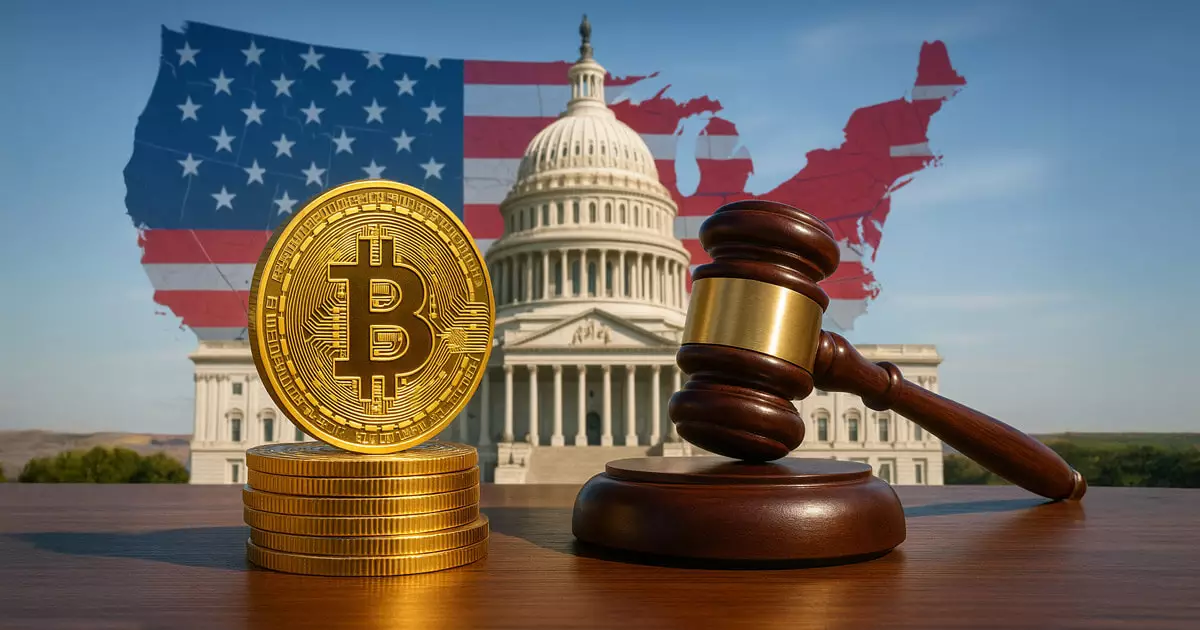The introduction of the Digital Asset Market Clarity Act by House Financial Services Committee Chairman French Hill marks a pivotal moment for the cryptocurrency landscape in the United States. This bipartisan initiative aims to streamline regulation by establishing a centralized federal framework to oversee the burgeoning sector. With this extensive 249-page legislation, Hill has made a bold statement: the time for ambiguity in digital asset regulation is over. The complexity surrounding various financial instruments—from securities to commodities—has stifled innovation and unnerved investors. Through clear definitions and designated oversight, this act not only provides necessary structure but also positions the U.S. as a frontrunner in the global digital asset arena.
Unpacking Key Provisions
One of the standout features of the proposed bill is its nuanced approach to terminology. By defining terms such as “digital commodity” and “permitted payment stablecoin,” the legislation aims to eliminate the gray areas that have led to confusion in the market. This legislation introduces a four-year safe harbor for primary token offerings, essentially providing startups breathing room to grow without immediate pressure from regulatory bodies, provided they do not exceed a $75 million fundraising cap in any 12-month span. Such provisions could be a boon for innovators and entrepreneurs, allowing them to nurture their technological breakthroughs without the looming threat of legal ramifications.
Moreover, the proposal seeks to reform the oversight landscape by assigning the Commodity Futures Trading Commission (CFTC) exclusive authority over spot trading, brokerage, and custody of digital commodities. For a long time, the ambiguous jurisdiction has hampered growth and led to distrust among potential investors. This bill finally clarifies that digital commodities will fall largely under CFTC oversight, while the Securities and Exchange Commission (SEC) retains authority over hybrid products. This division of labor is not just logical; it is exactly what the market needs as it seeks to mature.
Empowering Markets and Consumers
Prominent House members have praised the bill for its empowering nature. House Majority Whip Tom Emmer characterized the legislation as a “bold step” to secure America’s dominance in what is often dubbed the ‘next iteration of the internet.’ This isn’t mere fluff; it signals a crucial understanding that the digital world is evolving exponentially. It offers a pathway for innovators, creators, and consumers alike to engage in these digital ecosystems confidently.
By providing clarity, the act democratizes market access. It recognizes that future financial growth is not limited to established entities but thrives on inclusivity. Notably, the provisions aimed at protecting self-custody and transaction freedom suggest a concerted effort to empower individual users. Representatives like Ohio’s Warren Davidson have emphasized the importance of these safeguards, ensuring that the principles of personal liberty are not lost in the regulatory shuffle.
Consumer Protections: A Focus on Inclusion
Interestingly, the bill is co-sponsored by Democrats, indicating a unified front across party lines in recognizing the potential of cryptocurrencies. It has been framed not just as a regulatory measure but as an essential consumer protection policy. This dual focus on inclusion and safety reverberates through the narrative put forth by co-sponsors like Angie Craig and Ritchie Torres. They highlight how regulatory certainty can close gaps and provide “rules of the road” that consumers desperately need.
This reflects a growing understanding that as technology evolves, so too must our approaches to regulation. Ensuring that businesses understand their obligations while also protecting consumers is not just responsible governance; it is the blueprint for sustainable growth in any economy.
The Road Ahead: A Path Toward Unified Regulation
The reception to the Digital Asset Market Clarity Act underscores a critical turning point in American economic policy. With plans for joint markups and further discussions in the House, it is clear that regulatory action is imminent. If passed, this legislation may serve as a model for other nations grappling with similar challenges in the digital asset space. The world is watching closely, and the stakes couldn’t be higher. The future of finance is digital, and with it comes a compelling opportunity for the U.S. to assert its leadership in a transformative sector that could redefine economic landscapes globally.

